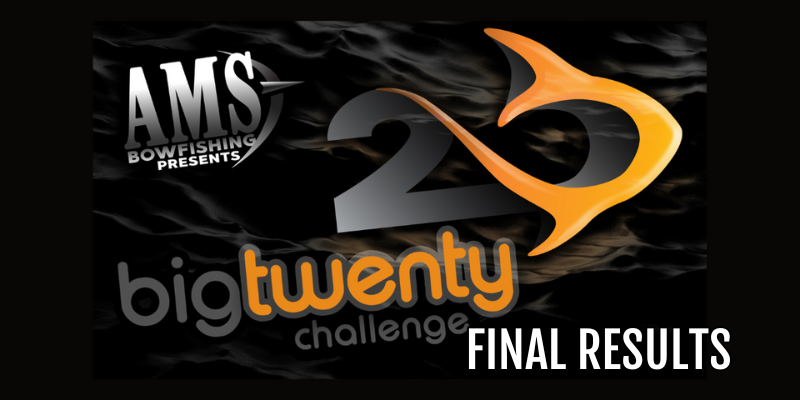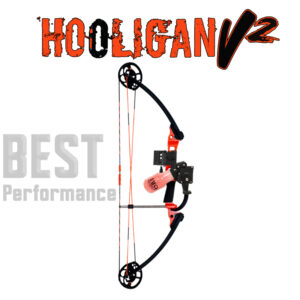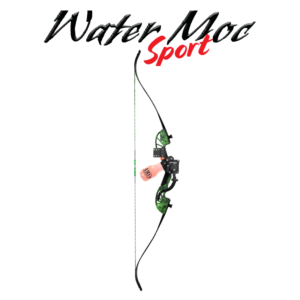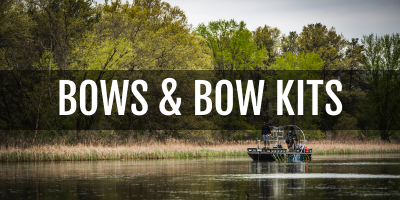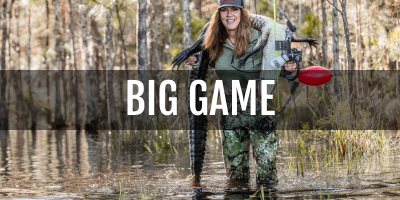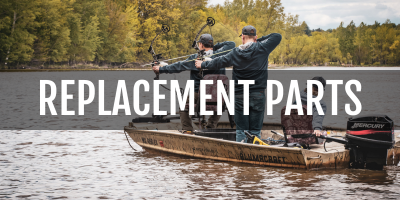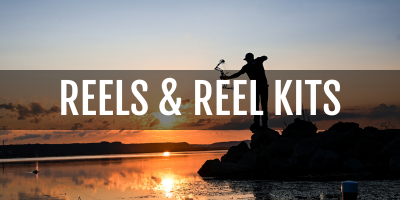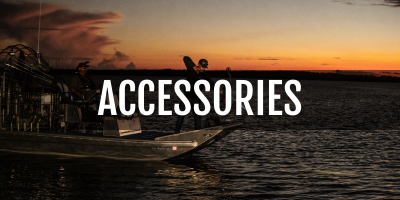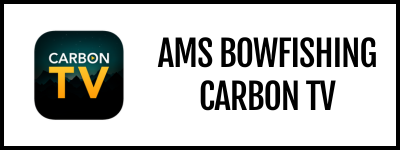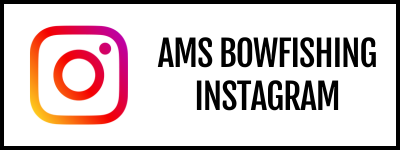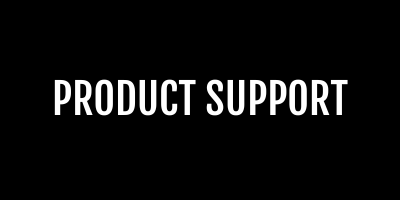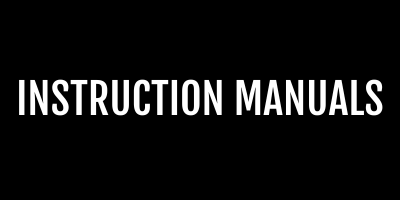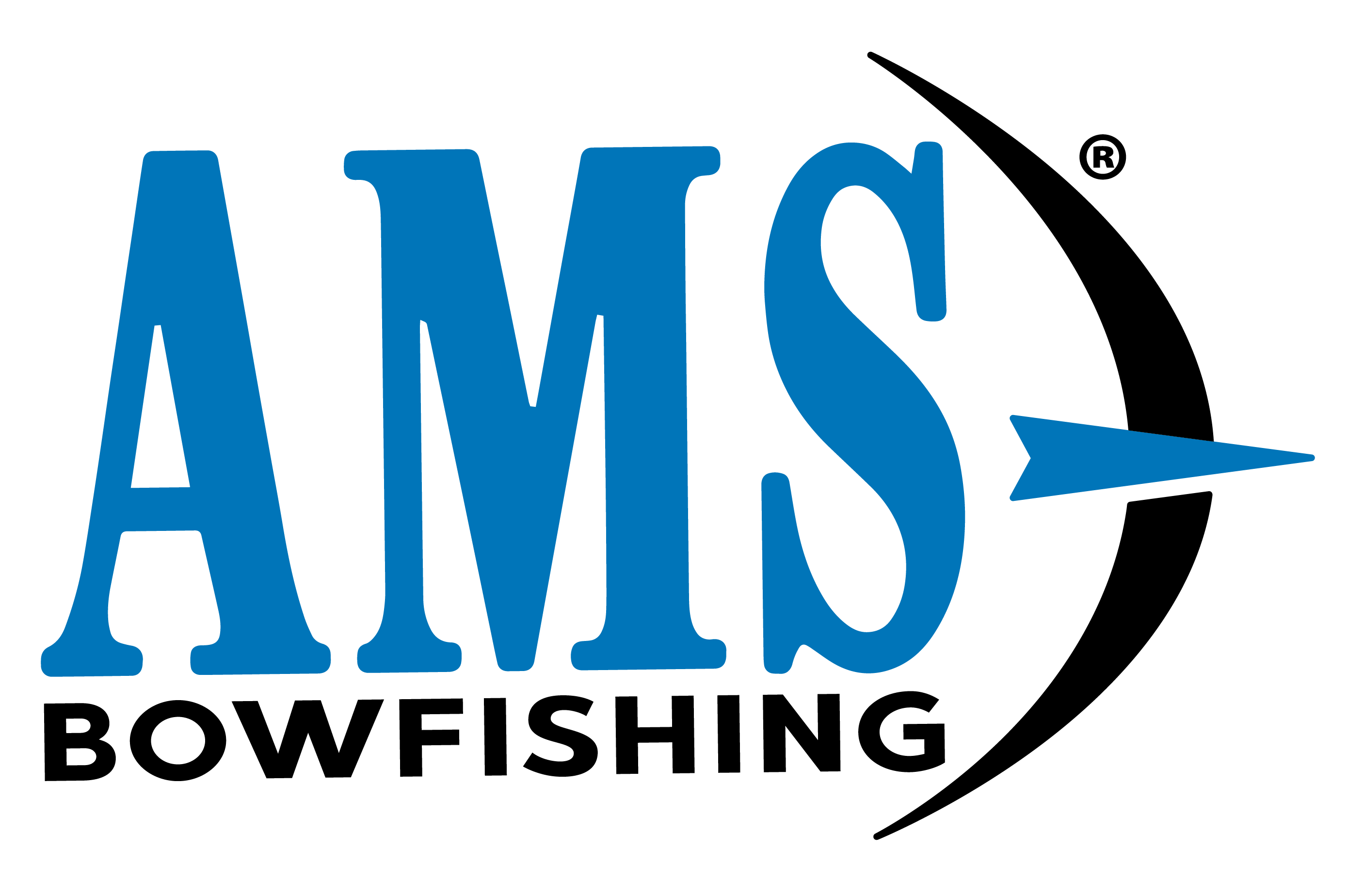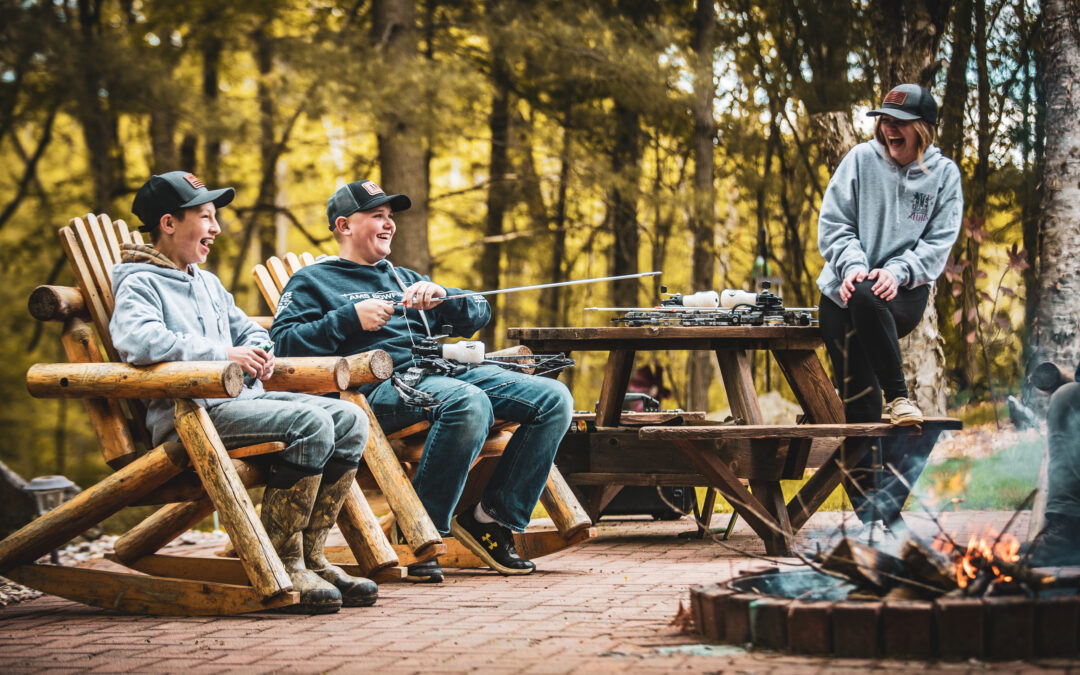BOWFISHING 101
Getting started in bowfishing is not as hard as you might think and requires no previous fishing experience. A good body of water, quality equipment, some practice and attention to safety are all that you need.
Bows
An old dusty compound or recurve bow hanging in the garage will have you bagging fish in no time. But there are advantages to using bows made specifically for bowfishing. Our Hooligan® V2 bow has no let-off which allows you to shoot quickly at fast moving fish without coming to full draw. When bowfishing, you could potentially be shooting hundreds of arrows, so using a draw weight between 30-50# is recommended.
Reels
The second most important piece of equipment is a quality bowfishing reel. The pioneer in bowfishing reels is the Retriever® by AMS Bowfishing®. It mounts to the sight holes on the riser of the bow. The Retriever® is easy to operate and has been time-tested on millions of fish. Just shoot and line will flow out of the bottle with zero drag. To retrieve your arrow, pull the lever with the index finger of your bow hand while turning the crank with the other hand.
Arrows
The majority of bowfishing arrows are solid fiberglass with a point glued or pinned to the shaft. The EverGlide® Safety Slide® system should be used on every arrow, as tying line to the tail of an arrow is a dangerous practice. Simply tie your line to the slide and keep the slide in front of the arrow rest on the shot. AMS feels so strongly about this that an EverGlide® Safety Slide® system is included with every Retriever® reel and pre-installed on every arrow.
Points
When choosing a point, consider the type of fish you’re shooting and your preferred release style. Some types require complete removal of the tip, while others allow for quick release by either loosening the tip or turning the arrow shaft. Shorter points, like the Chaos®, with narrow barbs allow better penetration of the fish. Triple barbed points, such as the Ankor® points, offer more holding power and are generally used for larger, soft-fleshed fish.
Arrow Rests
The last critical piece of equipment you need is an arrow rest that can support the weight of solid fiberglass bowfishing arrows. When selecting a rest, you’ll want something sturdy and quick-to-load during the fast-action of bowfishing. AMS Bowfishing® has several arrow rests to choose from. All of our rests are quick-loading, sturdy for supporting a heavy bowfishing arrow and able to safely control the arrow for rapid-fire bowfishing.
Extras
For day fishing, a good pair of polarized sunglasses are a must. Wearing a hat and keeping the sun to your back will help cut the glare and make the fish more visible beneath the water’s surface. For night bowfishing, safety glasses are also recommended. Small boats or specialized bowfishing boats are often used, but you can also bowfish from shore lines and docks or wade in the shallows and streams.
Getting Into Bowfishing
From someone who remembers all the trial and error that comes with getting into the sport, here are a couple things that are very important to consider when it comes to beginner bowfishing.
Where to Aim
Having a background shooting target archery in my childhood, I figured that shooting fish that were 5-10 yards away would be a breeze! WRONG! Because of the refraction of the water, you must aim much lower than you anticipate. A general rule of thumb is to aim at the bottom of the fish’s belly. This can be a tricky technique to master though, as the closer the fish is to you, the less you need to worry about water refraction. If the fish is 3 feet away and in shallow water, you can pretty much aim straight on. If the fish is 20 feet away and in 4 feet of crystal-clear water, refraction will play a much bigger role. The further away, or deeper the fish, the lower you will need to aim. The best way to improve your shooting is to get out on the water and experience this yourself. Over time, you will instinctively know where you need to aim.
Finding Fish
I was rather lucky as a kid to know multiple people that had bowfishing boats. As fun as shooting in a boat is, you certainly do not need one in order to shoot fish. When the fish are spawning in the spring time, you can literally drive around the body of water looking for splashing, spawning fish. Once you locate some, you can sneak up on them on shore and shoot loads of fish. Wading in after them is also a very effective tactic and one of my favorite ways to bowfish. Many spots with clear water are also hot spots for shooting fish without a boat.
Polarized Sunglasses
I feel as though this is a rather underrated piece of equipment when it comes to bowfishing. I remember one of my first times out bowfishing, I was wading in the water and my buddies and I were shooting common carp while they were spawning during the daytime. Fish were everywhere! My buddies were shooting left and right, connecting on almost all their shots and having a blast while doing so. I was struggling. I couldn’t see any of the fish, much less shoot at them! I had normal sunglasses on and once a buddy borrowed me his for a couple minutes, I realized how amazing polarized sunglasses really are. It’s like you’re looking into a different world. I purchased a pair of polarized glasses on the way home from that trip and I still use them today.
Fish Disposal
Although carp are edible, especially when they come from clean water, often bowfishers have more than they can use. Regulations for the disposal of rough fish vary by state, but most often you are not to release live fish back into the water and are asked to properly dispose of them. Knowing how you are going to dispose of your fish is something that needs to be considered BEFORE you hit the water. Since we live in a rural area, we have a local farmer that is more than willing to let us put our fish straight into his manure pit to be later used as nitrogen boosting fertilizer. Your garden or compost pile might also be an option. Some states will even have designated “fish disposal dumpsters” located at boat landings. Whatever you do, DO NOT just dump your fish in a roadside ditch or at the boat landing. This gives bowfishing a terrible name and often times results in a substantial fine.
By Derrick Schmidt and Mathew Schillinger
